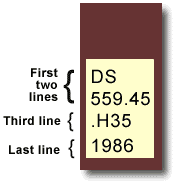
The library offers a number of other search tools, including the Discover@UMSL search tool, or the MOBIUS Catalog which provides searching to other consortium libraries which UMSL is partnered with to provide fast delivery.
On the results page, you can include or exclude types of publications, content, disciplines, subjects, etc. Look at the options on the left of your screen for ways to LIMIT YOUR SEARCH.
When you are looking for books, limit your search to the Library Catalog, and limit the CONTENT TYPE to Book / eBook.
If you are not finding what you seek in the results, try adding or removing key words from your search or try some of these other limits:
PUBLICATION DATE: Allows you to limit material to a specific date or date range.
DISCIPLINE: Depending on the focus of your research you may want to limit by field of study
SUBJECT TERMS: will pull up a list allowing you to exclude subject headings or limit to more specific subject terms.

There are 3 pieces of information you need about a book to find it on the shelf.
The status: NOT CHECKED OUT means you can get it today.
The call number : LC40.G88 1992
The location : UMSL TJ Level 4.
Reading a Call Number

Although it was developed to organize materials housed at the Library of Congress, the Library of Congress Classification system (LCC) is now widely used in academic libraries around the world. The LCC system begins with 21 categories, each identified by a letter of the alphabet. Most of the categories are also broken down - to get more specific - and identified by 1 or 2 more letters. For example N contains Fine Arts; ND is Painting, a topic in fine art.
Individual topics are also delineated by place, time period, etc. using numbers (in ND673 you'll find books on painter Peter Paul Rubens who lived 1577-1640). A call number may have up to 4 digits (1-9999) in the main part, and then if necessary, decimal places that may have only numbers or both a letter and numbers. (Library of Congress Classification http://www.loc.gov/catdir/cpso/lcc.html)